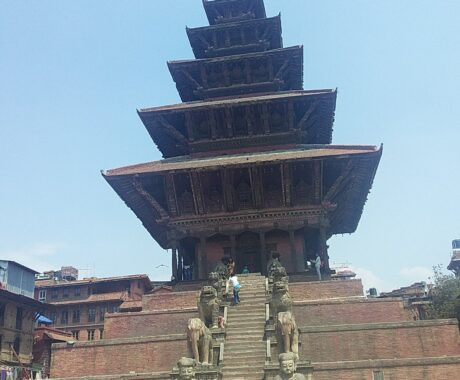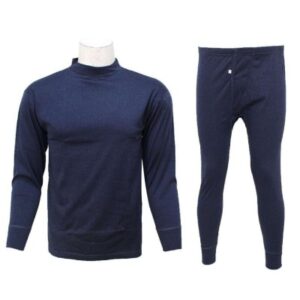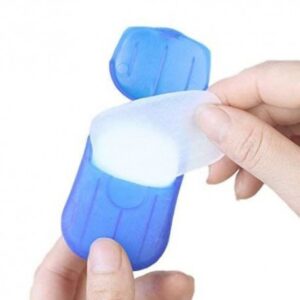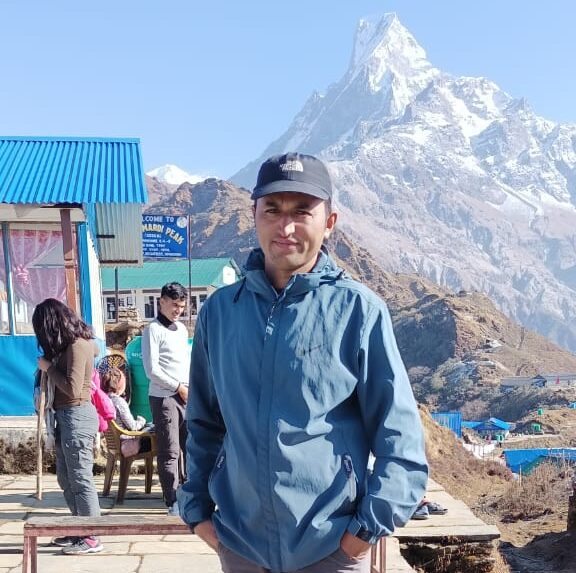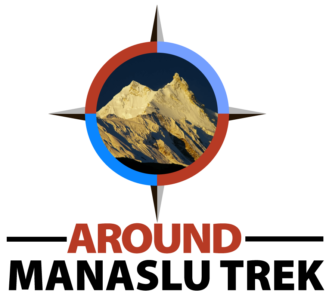Nepal & Tibet Overland Tour
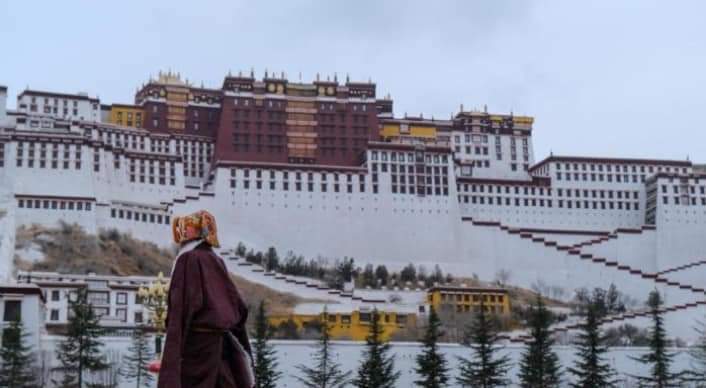
Trip Facts
Trip Highlights
- Retrace ancient trade routes linking the two locations (Nepal and Tibet)
- Darchen - the starting point for the Kailash trek
- 02 - day trek around Mount Kailash
- Get close-up views of the sacred Mount Kailash - 6,638m
- Visit Lake Mansarovar, with its pristine blue waters
- Bathe in Lake Mansarovar which is considered spiritually purifying
- Witness the stunning natural beauty of the Tibetan landscape
- Explore remote regions with an average elevation of - 4,500m
- Opportunity to connect with ancient culture and traditions
Introduction
RP Adventures is a versatile travel and tour operator based in the Himalayan region, specializing in a wide array of adventure and cultural experiences across Nepal, Tibet, India, and Bhutan. With a commitment to providing high-quality, safe, and memorable adventures, RP Adventures caters to all types of travelers, from the intrepid trekker seeking to conquer high peaks to the cultural enthusiast eager to explore ancient traditions and landscapes. Here’s an overview of their offerings.
Kerung
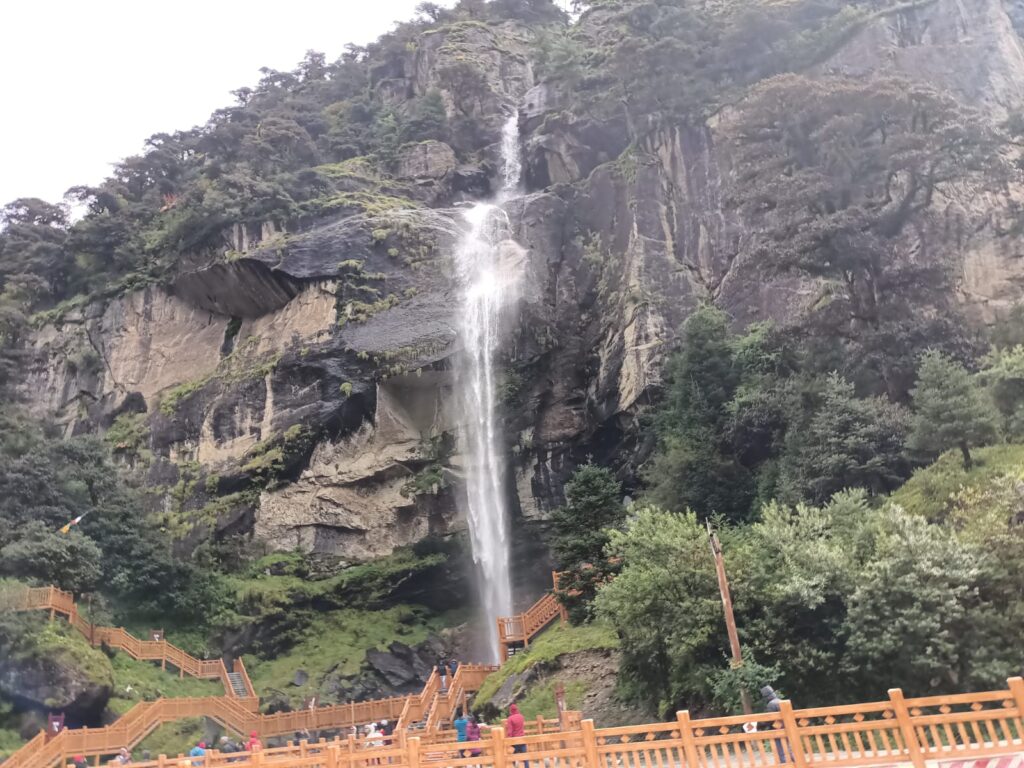
Kerung, known in Tibetan as Gyirong, serves as a significant border town between Nepal and Tibet. It’s nestled in a verdant valley with a relatively mild climate, making it an agricultural hub in the region. The recent opening of the Gyirong Port has enhanced its importance as a trade and travel gateway. For travelers, Kerung is the first stop in Tibet, providing a place to acclimatize to the high altitude and a glimpse into Tibetan culture and lifestyle.
Saga
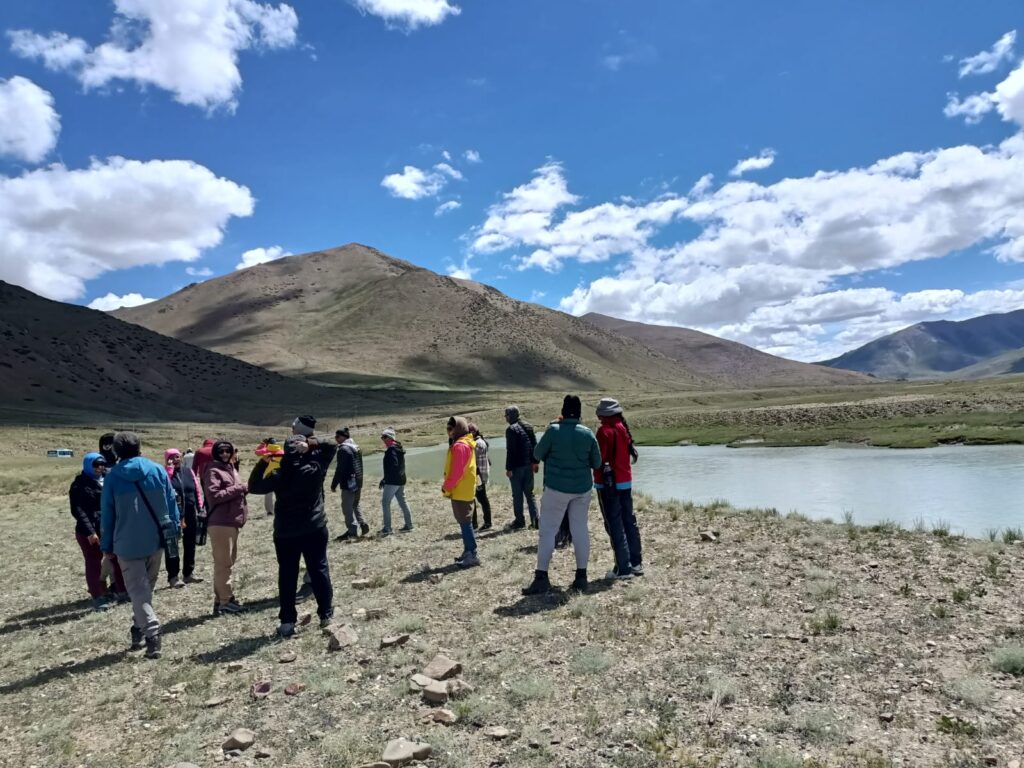
Saga is a small town that acts as a critical junction for pilgrims and travelers heading to Mount Kailash, Lake Manasarovar, and further into western Tibet. While primarily a transit point, Saga is equipped with basic amenities like guesthouses and restaurants to accommodate visitors. The town is surrounded by vast, open landscapes that are characteristic of the Tibetan plateau.
Lake Manasarovar
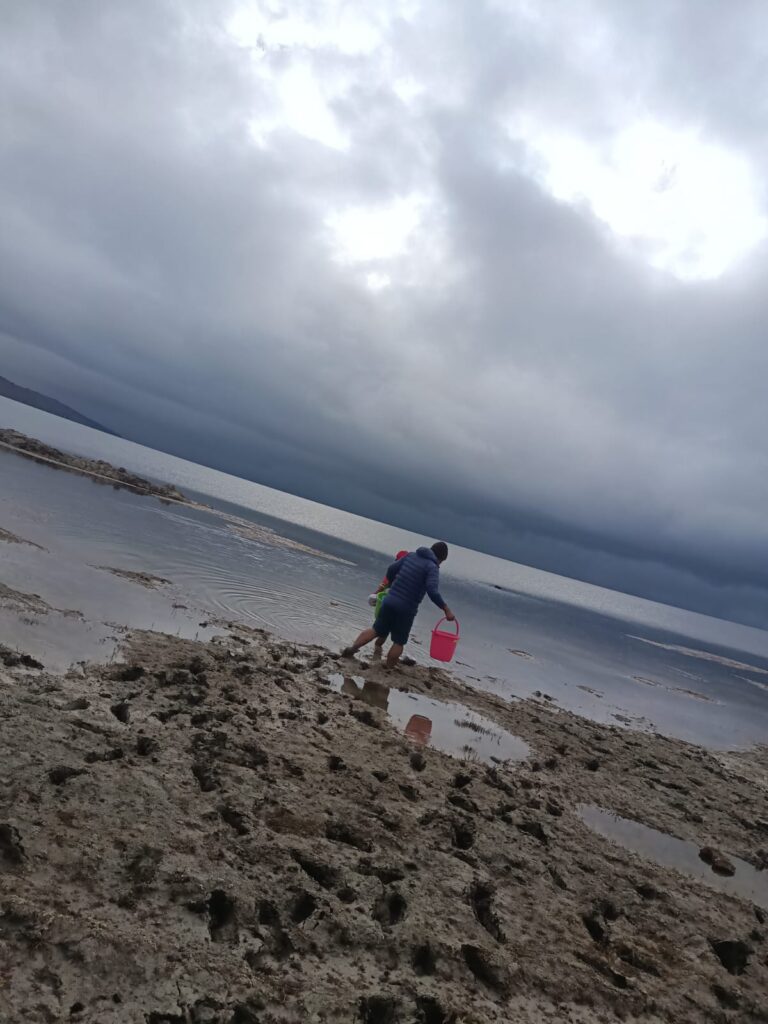
While not a village, Lake Manasarovar is a significant spiritual destination, revered in Hindu, Buddhist, Jain, and Bon traditions. It lies at an altitude of about 4,590 meters (15,060 feet) and is known for its exceptional beauty and tranquility. Pilgrims believe that bathing in the lake or drinking its waters cleanses sins. The lake offers awe-inspiring views of the nearby Mount Kailash, making it a place of profound spiritual and natural significance.
Darchen
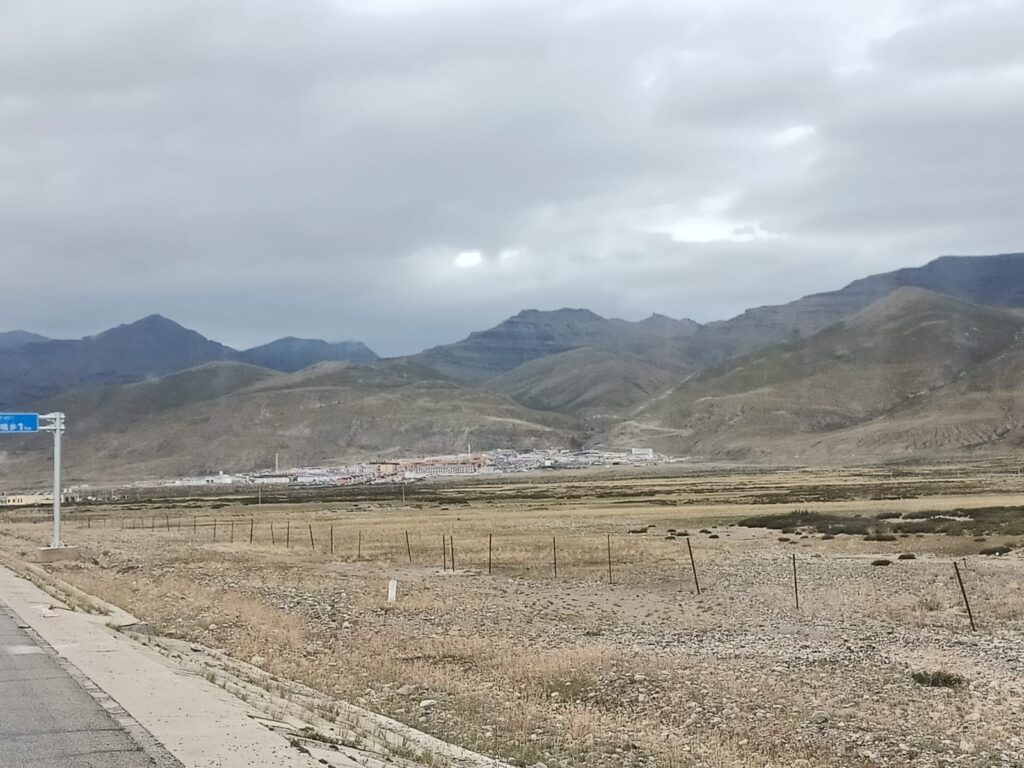
Darchen is a small village located at the base of Mount Kailash, serving as the starting point for the kora (circumambulation) around the sacred mountain. It is situated at an altitude of around 4,575 meters (15,010 feet). Over the years, Darchen has developed to cater to the needs of pilgrims and trekkers, offering accommodations and other essential services. The village is a place of preparation and contemplation for those about to undertake the spiritual journey around Kailash.
Shigatse
Shigatse, often romanized as Xigazê, is Tibet’s second-largest city and an essential hub for Tibetan Buddhism. It is home to the Tashilhunpo Monastery, the traditional seat of the Panchen Lamas. Shigatse offers a blend of modernity and tradition, with bustling markets, historic sites, and stunning monastic architecture. The city serves as a gateway to explore the Everest region and the vast landscapes of western Tibet.
Lhasa City

Lhasa, the capital of Tibet, is a city steeped in history and religious significance. It is home to the iconic Potala Palace, which towers over the city and served as the winter residence of the Dalai Lamas. Lhasa is a place of pilgrimage, with sites like the Jokhang Temple and Barkhor Street attracting devotees and tourists alike. The city beautifully blends traditional Tibetan culture with modern aspects, making it a fascinating place to explore the rich heritage of Tibet.
Each of these locations contributes to the tapestry of experiences that Tibet offers, from the spiritual to the scenic, providing travelers with insights into the region’s unique culture, history, and natural beauty.
Outline Itinerary
Day 1: Arrival in Kathmandu
Day 2: Pashupatinath & Guhyeshwari Darshan + Visa Formalities
Day 3: Doleshwor Mahadev & Bhaktapur Visit
Day 4: Chandragiri Hill & Kathmandu Durbar Square
Day 5: Dakshinkali Temple + Patan Durbar Square
Day 6: Drive to Kerung (3000m) via Rasuwagadhi
Day 7: Drive to Saga (4500m)
Day 8: Acclimatization Day in Saga
Day 9: Drive to Lake Mansarovar (4560m)
Day 10: Mansarovar Puja + Drive to Darchen via Tirthapuri
Day 11: Acclimatization + Hike to Nandi Parvat Base
Day 12: Drive to Yamdwar & Trek to Dirapuk (4800m+)
Day 13: Rest Day at Dirapuk
Day 14: Trek Back to Darchen (Complete Parikrama)
Day 15: Drive to Saga
Day 16: Drive to Everest Base Camp (North Side, Tibet)
Day 17: Drive to Lhasa
Day 18: Full-Day Sightseeing in Lhasa
Day 19: Fly Back to Kathmandu
Day 20: Rest Day in Kathmandu
Day 21: Final Departure
Nepal & Tibet Overland Tour 2026 & 27 – Fixed Departure Schedule
| Arrival in Nepal | Visa Submission | Departure to Tibet | Return to Kathmandu | Departure from Nepal |
|---|---|---|---|---|
| 26 April 2026/27 | 27 April 2026/27 | 03 May 2026/27 | 12 May 2026/27 | 14 May 2026/27 |
| 17 May 2026/27 | 18 May 2026/27 | 24 May 2026/27 | 02 June 2026/27 | 04 June 2026/27 |
| 31 May 2026/27 | 01 June 2026/27 | 07 June 2026/27 | 16 June 2026/27 | 18 June 2026/27 |
| 21 June 2026/27 | 22 June 2026/27 | 28 June 2026/27 | 07 July 2026/27 | 09 July 2026/27 |
| 12 July 2026/27 | 13 July 2026/27 | 19 July 2026/27 | 27 July 2026/27 | 29 July 2026/27 |
| 02 August 2026/27 | 03 August 2026/27 | 09 August 2026/27 | 18 August 2026/27 | 20 August 2026/27 |
| 23 August 2026/27 | 24 August 2026/27 | 29 August 2026/27 | 08 September 2026/27 | 10 September 2026/27 |
| 13 September 2026/27 | 14 September 2026/27 | 20 September 2026/27 | 29 September 2026/27 | 01 October 2026/27 |
| 27 September 2026/27 | 28 September 2026/27 | 04 October 2026/27 | 13 October 2026/27 | 15 October 2026/27 |
Alternative Tours Around Nepal & Tibet Overland Tour
If you’re drawn to the Nepal & Tibet Overland Tour but are seeking a different experience, these alternatives offer similar cultural depth, Himalayan landscapes, and a sense of adventure:
- Nepal and Bhutan Tour – 9 Days: Explore the beauty of both Nepal and Bhutan, from the cultural riches of Kathmandu to Bhutan’s stunning monasteries and mountain landscapes, making for a perfect combination of history and natural beauty.
- Kailash Mansarovar Tour – 18 Days: Embark on a spiritual journey to the sacred Mt. Kailash and Mansarovar Lake in Tibet. This tour offers a deep connection to Tibetan Buddhism and Hinduism, along with incredible high-altitude trekking experiences.
- Bhutan Tour – 5 Night 6 Days: Experience the charm of Bhutan with a short but immersive journey through its stunning valleys, iconic monasteries, and breathtaking mountain scenery. Perfect for those looking for a quieter, culturally enriching experience.
Detailed Itinerary
-
Day 1: Arrival in Kathmandu
Activity: Arrival at Tribhuvan International Airport.
- Transfer: Pick-up and transfer to Hotel Hilton.
- Meals: Dinner only (AP Plan begins).
- Briefing: Light acclimatization; evening group meet & introduction session.
Altitude: 1300Meals: DinnerAccommodation: 5 star hotel in Kathmandu -
Day 2: Pashupatinath & Guhyeshwari Darshan + Visa Formalities
Morning:
- VIP Darshan of Pashupatinath Temple.
- Perform Rudra Abhishek with experienced priests.
- Visit sacred Guhyeshwari Temple, a key Shakti Peeth.
Afternoon:
- Return to hotel for lunch.
- Chinese visa application & biometric submission.
Evening: Yatra briefing – guidelines, altitude awareness, packing checklist.
- Meals: Breakfast, lunch, and dinner.
Overnight: Hotel Hilton.
Altitude: 1300Meals: Breakfast / lunch / DinnerAccommodation: 5 star hotel in Kathmandu -
Day 3: Doleshwor Mahadev & Bhaktapur Visit
Morning:
- Visit Doleshwor Mahadev Temple (linked to Kedarnath).
- Explore Bhaktapur Durbar Square – UNESCO heritage site.
Afternoon:
- Visit Budhanilkantha Temple (Sleeping Vishnu).
- Optional visit to Swayambhunath (Buddha Stupa).
- Those joining Muktinath add-on tour (extra cost) can fly out today.
- Meals: All meals at hotel.
Overnight: Hotel Hilton.
Altitude: 1300Meals: Breakfast / lunch / DinnerAccommodation: 5 star hotel in Kathmandu -
Day 4: Chandragiri Hill & Kathmandu Durbar Square
Morning:
- Cable car ride to Chandragiri Hill for panoramic views.
- Visit Swayambhunath (Monkey Temple).
Afternoon:
- Visit Kathmandu Durbar Square & Kumari Ghar (Living Goddess).
- Meals: Breakfast, lunch, and dinner.
Overnight: Hotel Hilton.
Altitude: 1300Meals: Breakfast / lunch / DinnerAccommodation: 5 star hotel in Kathmandu -
Day 5: Dakshinkali Temple + Patan Durbar Square
Morning:
- Drive to Dakshinkali Temple (powerful Kali Shakti Peeth).
- Perform Devi darshan and offerings.
Afternoon:
- Explore Patan Durbar Square.
- Return to hotel, complete final packing and medical check.
- Meals: All meals included.
Overnight: Hotel Hilton.
Altitude: 1300Meals: Breakfast / lunch / DinnerAccommodation: 5 star hotel in Kathmandu -
Day 6: Drive to Kerung (3000m) via Rasuwagadhi
Early Morning:
- Depart Kathmandu for Rasuwagadhi (~6–7 hrs).
Afternoon:
- Cross into Tibet via immigration.
- Drive to Kerung town.
- Meals: Prepared by Nepali vegetarian kitchen team.
Overnight: Guesthouse in Kerung.
Altitude: 3000mMeals: Breakfast / lunch / DinnerAccommodation: 3 star hotel in kerung -
Day 7: Drive to Saga (4500m)
Scenic Drive:
- Cross Kerung Valley and a high-altitude pass (~5300m).
- Views of Langtang & Ganesh Himal ranges.
- Duration: ~8 hrs with scenic/photo stops.
- Meals: Kitchen-prepared.
Overnight: Hotel/guesthouse in Saga.
Altitude: 4500mMeals: Breakfast / lunch / DinnerAccommodation: 3 star hotel in saga -
Day 8: Acclimatization Day in Saga
Purpose:
- Rest and allow body to adapt to 4500m altitude.
- Optional short walk to aid oxygen absorption.
- Briefing: Awareness on high-altitude symptoms and use of oxygen support.
- Meals: Kitchen-prepared.
Overnight: Saga.
Altitude: 4500Meals: Breakfast / lunch / DinnerAccommodation: 3 star hotel -
Day 9: Drive to Lake Mansarovar (4560m)
Drive: Through Mayum La Pass (~5200m).
Activities:
- First darshan of Mount Kailash.
- Take holy dip in Lake Mansarovar (if weather allows).
- Meals: Lunch en route, dinner at guesthouse.
Overnight: Guesthouse near Mansarovar Lake.
Altitude: 4560mMeals: Breakfast / lunch / DinnerAccommodation: Guesthouse -
Day 10: Mansarovar Puja + Drive to Darchen via Tirthapuri
Morning:
- Perform Havan and Puja at Lake Mansarovar shore.
- Fill holy water for return.
Afternoon:
- Visit Tirthapuri – sacred site of Parvati and Shiva.
- Continue drive to Darchen (base camp of Kailash).
- Meals: Kitchen team food.
Overnight: Guesthouse in Darchen.
Altitude: 4800Meals: Breakfast / lunch / DinnerAccommodation: 4 star hotel in darchen -
Day 11: Acclimatization + Hike to Nandi Parvat Base
Activity:
- Optional light hike to the base of Nandi Parvat.
- Check gear and physical readiness.
- Purpose: Acclimatization before Parikrama begins.
- Meals: All meals included.
Overnight: Guesthouse in Darchen.
Altitude: 4900Meals: Breakfast / lunch / DinnerAccommodation: Guesthouse -
Day 12: Drive to Yamdwar & Trek to Dirapuk (4800m+)
Drive: To Yamdwar, starting point of Parikrama.
- Trek/Ride: 12 km to Dirapuk (5–6 hrs); horses optional.
- Highlight: Spectacular view of Kailash North Face.
- Meals: Packed lunch, hot dinner at Dirapuk.
Overnight: Guesthouse/tent in Dirapuk.
Altitude: 4900Meals: Breakfast / lunch / DinnerAccommodation: Guesthouse/tent -
Day 13: Rest Day at Dirapuk
Optional: Short hike to Charan Sparsha (touching Kailash’s feet), if weather and health permit.
- Purpose: Acclimatization and spiritual reflection.
- Meals: Kitchen team food.
Overnight: Dirapuk
Altitude: 4900Meals: Breakfast / lunch / DinnerAccommodation: Guesthouse/tent -
Day 14: Trek Back to Darchen (Complete Parikrama)
Note: This day replaces the traditional Dolma La crossing.
- Trek: Return to Darchen from Dirapuk (short descent).
- Purpose: For those not completing full Kora due to health or weather.
- Meals: All meals included.
Overnight: Darchen.
Altitude: 4800Meals: Breakfast / lunch / DinnerAccommodation: Guesthouse/tent -
Day 15: Drive to Saga
Return journey to Saga.
- Scenery: Same scenic route with rest stops.
- Meals: Kitchen team food or hotel meals.
Overnight: Hotel/Guesthouse in Saga.
Altitude: 4500Meals: Breakfast / lunch / DinnerAccommodation: Hotel/Guesthouse -
Day 16: Drive to Everest Base Camp (North Side, Tibet)
Scenic Drive:
- Cross high mountain terrain toward EBC North.
Experience:
- Optional short hike around Rongbuk Monastery.
- Glimpse Mount Everest (Chomolungma).
Overnight: Tea house or basic accommodation near EBC.
Altitude: 5200Meals: Breakfast/lunch/DinnerAccommodation: Tea house -
Day 17: Drive to Lhasa
Long scenic drive from EBC to Lhasa.
- Duration: Approx. 10–11 hrs with breaks.
- Meals: Packed/snack lunch and hotel dinner.
Overnight: Hotel Yak or equivalent in Lhasa.
Altitude: 3500Meals: Breakfast / lunch / DinnerAccommodation: Hotel Yak -
Day 18: Full-Day Sightseeing in Lhasa
Activities:
- Visit Potala Palace, Jokhang Temple, Barkhor Street, and Sera Monastery.
- Purpose: Explore Tibetan culture and spiritual heritage.
- Meals: Hotel meals.
Overnight: Hotel in Lhasa.
Altitude: 3500Meals: Breakfast / lunch / DinnerAccommodation: 4 star hotel in lasha -
Day 19: Fly Back to Kathmandu
Morning: Transfer to Lhasa Airport.
- Flight: Back to Kathmandu (weather-dependent).
- Arrival: Pick-up and transfer to Hotel Hilton.
- Meals: Hotel meals.
Overnight: Kathmandu.
Altitude: 1300Meals: Breakfast / lunch / DinnerAccommodation: 5 star hotel in Kathmandu -
Day 20: Rest Day in Kathmandu
Optional:
- Visit to local temples, Ayurvedic massage, or shopping.
- Muktinath returnees complete city sightseeing.
- Meals: All meals included.
Overnight: Hotel Hilton.
Altitude: 1300Meals: Breakfast / lunch / DinnerAccommodation: 5 star hotel in Kathmandu -
Day 21: Final Departure
Transfer: Drop to Tribhuvan International Airport for return flight.
- Blessings: Completion of your sacred Yatra.
- Meals: Breakfast only.
Altitude: 1300Meals: Breakfast
What's included
- All international arrival and departure transfers
- 7 Nights accommodation in 5-star hotels in Kathmandu on a sharing basis room (Breakfast/Lunch/ dinner)
- 1-night accommodation in Timbure inside Langtang National Park near Kerung
- Private transportation, guide, and entrance fees for one day of sightseeing in Kathmandu
- Private transfers between the Kathmandu-Nepal/Tibet border (both ways)
- Customs formalities assistance at Nepal-Tibet immigration in Kerung (Kyirong)
- Tibet/Kailash travel permits and Tibetan visa
- Transportation in Tibet/Kailash region
- Truck to transport kitchen supplies and food
- Accommodation in guest houses on a sharing basis in the Kailash region
- All vegetarian meals during the tour
- Drinking water and hot beverages
- Duffel bag and small bag for personal use
- Warm jacket (returnable after use)
- Entrance fees for Lake Mansarovar
- Licensed English-speaking Tibetan guide
- Nepali crew, coordinator, kitchen staff and helpers
- Bathing tents, kitchen supplies, and equipment
- Yaks or porters to carry goods during Kailash Kora
- Emergency evacuation management
- First aid kit and oxygen
What's not included
- Any personal expenses such as insurance, emergency evacuation charges, and personal medical expenses
- Any items not mentioned under inclusions
- Tips, laundry, telephone calls, etc.
- Side trips other than those mentioned in the itinerary
- Any meals not specified as included
- Travel Insurance
- Additional cost of upgrading the accommodation
- Visa or permit fee due to the immediate rule modification from the Tibet part
- Emergency Evacuation
- Flights to/from Kathmandu
Trekking Gears
Before embarking on the Everest Base Camp Trek, it is crucial to meticulously pack the necessary clothing and gear, while also acquiring general knowledge about the trekking areas. As is well-known, the majority of trekking routes in Nepal commence from the subtropical region and ascend through the sub-alpine zone, eventually reaching the alpine zone above 4000m.
For instance, the ultimate destinations of many trails in the upper Khumbu region include Everest Base Camp, Kalapatthar, Gokyo, and the three high passes. All these locations are situated at altitudes exceeding 4,800m above sea level. Several treks initiate from various points such as Kathmandu, Lukla, Jiri, Bhandar, Salleri, Khari Khola, or Thame Dada.
To ensure a safe and comfortable trek in the Himalayan region, it is highly recommended to bring the appropriate equipment and gear to cope with the cold temperatures. The following is a list of essential equipment and gear, which can be purchased either in the Thamel market or brought from your home country:
Baggage
- 70-100 liters Duffle bag
For trekking and expeditions, a duffel bag is essential to pack all kinds of trekking equipment. Duffel bags come in various sizes, ranging from 60 liters to 100 liters. There are different brands available, such as The North Face, Sonam, Sherpa, Rab, and Everest Hikes. You can purchase these bags both online and offline in your homeland or in Kathmandu, particularly in Thamel's trekking shops. The cost varies depending on the brand, ranging from $15 to $100.
- Water proof day pack 30-40 liters
For hiking and trekking, you can choose from various brands of day bags. We recommend a 30 to 45-liter waterproof, strong, and good-quality day bag. Prices range from $40 to $200, depending on the brand and quality. You can purchase it in your homeland or buy it at the Thamel market (a trekking shop). Typically, this bag is used for day hiking and carries toiletries, emergency medical supplies, snacks, a water bottle, a jacket, warm shirts/t-shirts, a hat, trekking poles, and gloves.
- Pancho / Raincoat
Rain, wind, and snow are common in trekking areas. Typically, to avoid rain, we use a poncho, which also helps keep our body, clothes, and day pack dry. The cost of a raincoat is $10 to $50, depending on the quality, and it can be found in Thamel (a trekking shop). Alternatively, if possible, you can bring one from your own source.
- Power Bank / Trekking Solar
In the Himalayas, a trekking area, electricity is limited due to a small hydro power station. Sometimes, the electricity may not work, and often solar panels are used in most places. If the day is not sunny, then solar panels may not work. In that case, we can use our own backup to charge electronic devices. The quality makes the price vary from $50 up to $150. You can buy it in a Kathmandu trekking shop, or you can bring it on your own.
- Water Filter
During mountain treks, it is essential to stay hydrated by drinking either hot or cold water. The mountain water is robust and rich in minerals. Having a water filter machine allows you to filter this water. This is not only environmentally friendly but also cost-effective, as plastic bottled water can be expensive. The price range for water filters is $50 to $100, depending on the brand. You can purchase one in your own country or buy it at a Thamel trekking shop.
- Sleeping bag (comfort rated _20)
Normally, we use a sleeping bag during camping trekking and teahouse trekking. In teahouses, we are provided with blankets, but during the busy season, the blankets may not be sufficient. That's why we highly recommend owning a sleeping bag. Sleeping bags come in different types, ranging from -5 degrees to -30 degrees, and they vary in price. If you choose to buy a local Nepali product, the cost may not be expensive, ranging from Rs 5000 to Rs 20000. However, if you prefer a brand like The North Face, Sonam, Sherpa, or RAV, the cost can range from $200 to $1000. You can purchase them online or offline.
In Nepal, you have the option to rent or buy a sleeping bag. If you opt for a trekking package, the organizer will arrange sleeping bags based on different trekking areas.
- Head torch
During our Himalaya trekking, we ventured into remote areas where electricity and lighting systems were scarce, even in teahouses and high passes such as Thorang Pass, Larkey Pass, and the three high passes. In these places, especially during nighttime trips to the toilet or while crossing high passes, a headlight is essential. Headlights come in different types, including a normal one, one with a battery, or another with an electric source, ranging in cost from $10 to $50. You can purchase them online or offline, either from trekking shops in Thamel or in your home country.
- Water bottles 1 lit 2
During Himalayan trekking, it is advisable to carry two types of bottles: a 1-liter small thermos for hot water, tea, or coffee, and another 1-liter bottle for regular drinking water. The prices for these bottles range from $7 to $50. You can purchase them at Thamel trekking shops or in your home country. In Nepal, these bottles are available both online and offline.
- Sun glass (100% up protection)
During Himalayan hiking and trekking, it is essential to have sunglasses that provide protection against dust, wind, snow, cold, and heat. Different weather conditions require different types of sunglasses. We highly recommend reputable brands for sunglasses, with prices ranging from $10 to 200%. These sunglasses are readily available both online and offline. You can conveniently purchase them from trekking shops in Kathmandu Thamel or from retailers in your own country.
Clothing Essential
- Water proof jacket
During Himalaya hiking and trekking, where you may encounter rain, wind, cold, heat, dust, and snow, it is essential to invest in a high-quality waterproof jacket for protection. Various brands offer reliable options, such as The North Face, Sherpa, Sonam, Black Diamond, and RAB, with prices ranging from $100 to $500. These jackets are available for purchase both online and offline. You can find them at The Kathmandu Thamel trekking shop or in stores in your own country.
- Warm down jacket
During the trekking, we need a down jacket for cold places. We highly recommend a local or international brand depending on your budget. The cost will start from $5 and can go up to $1000. The recommended brands are "The North Face, Sonam, Black Diamond, Sherpa," which you can buy from your home country or in Kathmandu Thamel trekking shops. They are available both online and offline.
- Warm jumper
When reaching the teahouses during Himalayan treks, it is advisable to change into warmer clothes. We highly recommend bringing a jumper, and there are both local and international brands available, depending on your budget. Prices start from $30 to $120. If you already have one, that's fine; otherwise, you can purchase it in Nepal from the Thamel market, both online and offline.
- Trekking trousers
During Himalaya trekking, it is essential to have waterproof trousers to protect against rain, wind, dust, cold, and snow. We highly recommend choosing a brand based on your budget, with prices ranging from $20 to $150. Some notable trekking trouser brands include "The North Face," "Sonam," "Black Diamond," and "RAB." These trousers can be purchased both online and offline. If you already have them, you can bring them along; otherwise, you can purchase them at the Nepal Thamel Market.
- Base layer shirts
Normally, during Himalayan trekking, we use base layer shirts to protect ourselves from wind, dust, sun, and rain while hiking. There are both local and international brands available, with costs ranging from $20 to $120. You can purchase them either online or offline. If you already have one, you can bring it with you; otherwise, you can buy it at a trekking shop in Nepal.
During Himalayan trekking, the trekking areas can be extremely cold. We highly recommend purchasing a set of thermal clothing. There are both local and international brands available, such as The North Face, Sonam, Sherpa, Black Diamond, Kathmandu, and Everest. The cost can range from $50 to $250, and you can find these sets both online and offline. If you already have a set, you can use that; otherwise, we recommend buying one in Nepal, specifically at the Thamel market.
- Sunhat/warm hat/beanie
During Himalayan trekking and hiking, it is advisable to wear a sun hat to protect yourself from the sun. Additionally, when feeling cold, you can use your own woolen hat. We highly recommend purchasing either local or international brands, with prices starting from $5 and going up to $25. You can find these hats in the Thamel market in Nepal.
- Scarfs
During Himalayas trekking, it is essential to protect your neck, ears, mouth, and nose. We highly recommend purchasing different types of scarves, which are available in Nepal Thamel trekking shops. Prices start from $3 and go up to $25.
- Hiking boots
During Himalayan hiking and trekking, the most crucial equipment is footwear, particularly trekking boots. These boots are essential for safeguarding your ankles, ensuring safe walking, and being physically and mentally prepared for the trek. We highly recommend purchasing internationally recognized waterproof shoe brands such as Salomon, Hoka, Lowa, and Marmot. The cost typically starts from $150 and can go up to $400. You can find these brands in both Europe and Asia, including the Kathmandu Thamel market.
- Trekking socks / liner sock/heavy mountaineering socks
During Himalaya hiking and trekking, it is essential to have different types of socks depending on your budget. We highly recommend investing in trekking socks, with prices ranging from $3 to $30. There are both local and international brands available, and you can purchase them in Kathmandu's Thamel market.
- Thermal gloves / warm / water proof gloves
During Himalayas trekking, when we experience cold weather, we use different kinds of gloves. Some gloves are thin, while others are waterproof. We highly recommend buying them, with prices starting from $10 and going up to $50, depending on your budget.
- Sun protection / Lip Gaurd
During Himalayan hiking and trekking, we encounter various weather conditions such as sun, snow, cold, and dust, which can dry out the skin and lips. In such situations, it is essential to use protection, especially if you have sun allergy. We highly recommend purchasing lip balm and sunscreen, with costs ranging from $1 to $30. These products can be bought at trekking shops in Thamel, Kathmandu.
- Wash bag toiletries
During Himalayan hiking and trekking, we consistently rely on nature for various needs. For long toilet breaks, it is essential to carry toilet paper. Whether at tea houses or during the trek, having a good quality toilet paper is crucial. We highly recommend purchasing it from Thamel trekking shops, where the cost ranges from $1 to $2.
During Himalayan hiking and trekking, where access to washing towels or hot water is limited, it is recommended to purchase wet paper. The cost starts from $2 and can go up to $8 at medical shops in Thamel.
- Travel towel
During Himalayan hiking and trekking, the hotels are not luxurious; they are based on local standards. It is advisable to carry both a large and a small towel for drying the face and body. These items can be purchased at trekking shops in Thamel, with prices ranging from $2 to $20.
- Small pad lock to lock your bag
While hiking and trekking in the Himalayas, our duffel bag is carried by the porter. It is advisable to secure all your equipment inside the bag with a lock. We highly recommend purchasing a small lock, with costs ranging from $1 to $5, which can be found in Kathmandu's trekking shops.
- Medical Kits
During Himalayas hiking and trekking, most of the time, we are in remote areas and need to carry a basic medical kit with us. The emergency primary medicines we should have depend on our needs. You can buy them at a medical shop in the Thamel market. The basic first aid kit should include antiseptic cream, throat lozenges, diarrhea treatment (like loperamide), altitude sickness medication (such as acetazolamide), painkillers, insect repellent, plasters, blister treatment, insect repellent, and rehydration salts like Dioralite. Additionally, it's advisable to carry glucose tablets and multi-vitamin tablets.
- Trekking pole / Sleeping bag liner / Travel clothes / Camera / Pen knife
Normally, when getting ready for Himalayan hiking and trekking, both physically and mentally, it's
essential to have trekking poles. They provide support for another leg, and there are various types available. We highly recommend investing in a good quality pole.
Inside your sleeping bag, a liner is necessary to keep warm. Before and after trekking, comfortable city clothes are essential. You can use your old ones or opt to buy new ones depending on your preference.
During the trek, capturing different angles and views with a good camera is crucial. You can use your existing one or invest in a new camera based on your budget.
In case of emergencies or for general use during the trek, it's advisable to have a Swiss small knife. You can purchase all these items at Thamel trekking shops.
What Not To Pack?
- Jewelry and valuables things, Heavy zoom lenses for your camera, Too many cotton clothes/ more than one pair of jeans, Bulky towels
During Himalayan tours, including activities such as hiking, trekking, peak climbing, and expeditions, we strongly advise against bringing items such as jewelry, gold, excessive cash, large cameras, too many cotton clothes, thick towels, etc.
FAQs of Nepal & Tibet Overland Tour
-
What is the best time to go on the Kailash Mansarovar and Lasha tour?
The best time is from April to October when the weather is mild, and the roads are easily accessible. We don't recommend going during the winter months, from November to March, as the extreme cold makes the trek more difficult. The optimal months are May, September, and October. -
What facilities are provided during the Tour?
We provide comfortable transport for transfers, clean and hygienic vegetarian meals, and shared accommodation in guest houses and 3star to 4 star hotel during Kerung, Sagha, Darchen,Shighache, and lasha ,during kathmandu 5 star hotel with shering bed, Breakfast,lunch and dinner with common washrooms and hot water supply. Oxygen, first-aid, and basic medical facilities are also available throughout the journey. A professional English-speaking guide is provided as well. -
What is the level of fitness required for this tour?
Anyone with a moderate fitness level can complete this tour, as most of the walking is gradual. However, due to high altitude, even short walks can be demanding. As long as you are comfortable walking 5-6 km per day at 5000m altitude, you will be fine. -
Can senior citizens go on this tour?
Yes, generally anyone between the ages of 15-65 years is permitted to go on this tour. We have had many enthusiastic senior citizens on our tours so far. Our team monitors the guest's health status to prevent incidents. However, it is extremely important to get proper medical screening done before the tour if you have any pre-existing conditions. Having a positive attitude also goes a long way! -
How can one obtain a group visa from Nepal to Tibet?
Normally, we obtain a group visa through a government-licensed trekking agency, which then submits a proposal to the Tibetan agency. The Tibetan agency, in turn, puts forward the proposal to the local government along with all the required documents. -
What documents do we need for a Tibet visa?
For the Tibet visa system, the process is quite intricate. When planning a trip to Tibet, it is necessary to engage with a local agency and guide in Nepal. The Chinese visa application form needs to be filled out online, providing detailed information such as personal data, family background, work details, earnings, business information, a passport-sized photo, a copy of the Nepal visa, passport copy, and confirmed hotel bookings in both Nepal and Tibet. The form must be filled out personally, and the signature should be valid with the accompanying passport. -
How much time is required, and what is the cost for this trip?
Normally, we organize an 18-day tour plan from Kathmandu to Kathmandu. Due to the Chinese tour, we have to wait for 1 week in Kathmandu for visa processing. The price depends on the level of service, ranging from $3000 to $10000 for star-rated accommodations. -
How do we start the tour and trek – by overland or by flight
Normally, there are two ways to reach Tibet: overland and by flight. The overland routes include Hilsa border, Tatopani border, and (Kerung) Rasuwagadi border. Currently, we use only the Rasuwagadi border for entry and exit. As for the flight option, the Kathmandu to Lhasa flight is still closed due to the pandemic. Presently, we use Kathmandu to Timure by helicopter for the journey and return. -
Can solo trekkers easily obtain a visa?
No, solo trekkers cannot obtain a visa. To secure a visa, they need a minimum group size of 5 people with foreign passports. -
What is the meaning of Manasarovar and Rakshas Lake?
"Manasarovar" means "Lake of Consciousness" in Sanskrit, and it is a sacred freshwater lake in Tibet, associated with Hindu and Buddhist mythology. "Rakshas" in Rakshas Lake means "demon" in Sanskrit, and it is considered a darker lake, contrasting with the spiritually significant Manasarovar, both located near Mount Kailash. -
Where is Mount Kailash located, and how famous is it?
Mount Kailash is in the Kailash Range of the Himalayas in Tibet, China. It is extremely famous for its religious and spiritual significance, revered by Hindus, Buddhists, Jains, and Bon followers, attracting pilgrims and trekkers globally. -
What is the meaning of Lhasa, and how can we reach Lhasa?
Lhasa" means "place of the gods" in Tibetan. Lhasa, the capital of Tibet, is reachable by air, train, or road. Major airports and a railway link provide access, and road journeys offer scenic routes, making Lhasa accessible for travelers. -
What equipment do we need during this trek?
We need all the necessary trekking equipment for this trek and tour. -
How high is Mount Kailash Base Camp and Mount Kailash?
Mount Kailash Base Camp is approximately 15,092 feet (4,600 meters) above sea level. Mount Kailash, a sacred peak in the Himalayas, stands at 22,028 feet (6,714 meters), attracting pilgrims and trekkers for its spiritual significance and stunning scenery. -
Why is the Tibetan plateau referred to as a mountain desert plateau?
The Tibetan Plateau is labeled a "mountain desert plateau" due to its high elevation, arid climate, and extensive mountainous terrain. Its rain shadow effect, caused by the Himalayas, results in limited precipitation, creating a harsh and desert-like environment. -
What types of weather are found in Tibet, and why do Tibetan people only bathe three times in their entire life?
In Tibet, it is a northern Himalayan region with consistently cold weather. In the old Tibetan culture, people bathed only on three significant occasions: when they were born, when they got married, and when they died. This practice originated from the remoteness and cold climate of Tibet, where people didn't easily have access to clothes and showers. Due to their dependence on animals and lack of education, they traditionally bathed just three times in their lives. -
How old is Lhasa city, and why is it called the 'Golden City of the World'?
Lhasa, the capital of Tibet, is over 1,300 years old. It earned the title "Golden City of the World" due to the grandeur of its historical architecture, including the iconic Potala Palace, and its cultural significance as a center of Tibetan Buddhism. -
What are the Chinese rules for entering and exiting Tibet?
China has different rules for various entry points. When we enter the border, they biometrically scan us with our original permit, visa, and passport. Normally, we must exit from the same place we entered. In case of emergency, we seek assistance from a Chinese guide. -
How can we exchange dollars or rupees for Chinese Yuan (Renminbi)?
Normally, we can change money in Kathmandu at a money exchanger. Sometimes, if we did not change money in Kathmandu and cannot easily get Chinese Yuan (UN), we exchange it in Kerung or Lhasa with the help of a Tibetan guide. -
During the tour and trek, do we experience altitude sickness?
Normally, we start our treks and tours from Kathmandu (1300m) to Kerung (2800m), Sanga (4000m), (Manasarovar Lake) 4600m, Darchen (4800m), At these high altitudes, starting from 3000m, we may experience altitude sickness. During that time, we follow the guidelines and take primary medication. -
What are the emergency possibilities we have, and do we carry our own oxygen cylinder with us at all times during the tour and trek?
In any emergency cases, every local area has an ambulance, which we can use to reach a hospital. Ambulance services have different prices set by the government. All the time, when we start from Kerung and before leaving Kerung, we have our own oxygen cylinder. -
How do Tibetan people access education and health facilities?
Every village has a primary school, and each district has a headquarters, university, and hospital. Therefore, it is easy for them to access education and health facilities. -
What types of people live in Tibet, and what is their lifestyle like?
All Bon Buddhist people live in this area, leading a very simple lifestyle. Everybody depends on farming, and they have yaks as domestic animals. The Chinese occupied Tibet 57 years ago. Now, the Tibetan people's lifestyle has changed, and they can easily work for money, obtaining everything they need. They have a good lifestyle. -
Do we carry any books or photos of the Dalai Lama with us?
Carrying any kind of religious pictures, photos, books, or political books related to the Dalai Lama is not allowed. -
What views can we see during the Nepal and Tibet tour?
During the flight from Kathmandu to Timure, on the right-hand side, we can witness Langtang Lirung and Dorje Lakpa, while on the left-hand side, Ganesh Himal and Paldor Himal come into view. Upon entering Tibet, the Tibetan mountain range and Shisapangma become visible. -
What kind of activities are possible during the six days of Nepal visa time?
During that time, we engage in various activities. Firstly, we process our visa forms and check them. Following that, we undertake regular sightseeing, including Pashupati Darshan, Pashupati Aarati, Shankaracharya Math Rudraavhishek. City sightseeing encompasses visits to Boudhanath Stupa, Budhanilkantha, Swyambhunath Stupa, Doleswor (Head of Kedarnath), and all the Durbar squares in Kathmandu. Further activities include Manakamana Darshan, Muktinath and Damodar Kunda helicopter tours, Gosainkunda Helicopter tour, Everest area mountain flight, and finally, the guide will conduct a trip briefing. -
Do you have an another package (budget) ?
Yes, we offer budget packages for trekking that allow you to choose your own meals. While the trekking routes and permits remain the same, the level of service, including accommodations, food, and guide/porters, varies based on your budget. You can opt for accommodation ranging from 2-star to 5-star hotels, providing flexibility and affordability for your trekking adv -
Why RP Adventures is Different then others?
RP Adventures offers an exclusive and high-end trekking experience with its expensive packages. The allure lies in the luxurious accommodations, highly qualified and experienced guides with excellent educational and medical training, ensuring a safe and enriching journey. Private ground transportation adds to the comfort, while the option of helicopter sharing for aerial transport, especially in remote areas, enhances the adventure. The commitment to quality services and safety justifies the elevated cost, providing clients with a truly premium and unforgettable trekking and tour experience.
Trip You May Like
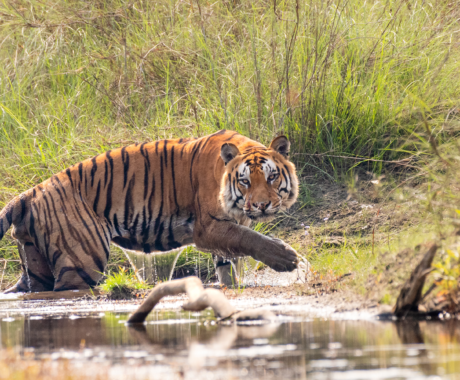
Bardia Tiger Tracking Tour – 7 Days
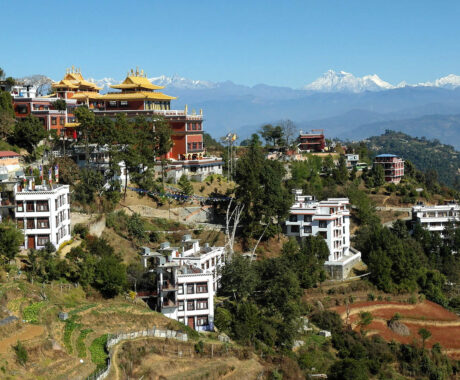
Dhulikhel & Namabuddha Tour
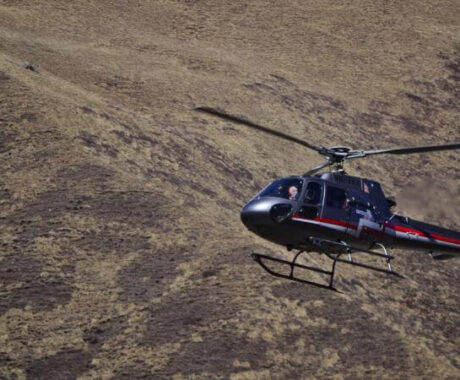
Muktinath & Damodar kunda Helicopter Tour
